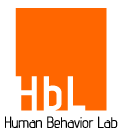A Brief History of Lie Detection
Polygraphs are a modern tool with a deep history.
People have attempted to detect liars for centuries.
Most lie-detection techniques have relied on detecting physiological changes associated with dishonesty.
Modern lie-detection techniques, such as brain imaging, are still imperfect tools for detecting deceit.
Since ancient times, the art of discerning truth from lies has captivated human curiosity. In our recent book, Pathological Lying: Theory, Research, and Practice, my co-author, Drew Curtis, and I discuss some of this history. Though the techniques and strategies used to detect liars have evolved over the centuries, the core element of all of them is the idea that when people lie, they change in subtle yet detectable ways.
Ancient Lie Detection
In ancient India, suspects were asked to chew on grains of rice and spit them out. The suspect was considered guilty if the grains were dry, while wet grains indicated innocence. The technique rested on the principle that liars produce less saliva because of the psychological stress and fear they experience. In Saudi Arabia, interrogators used the practice of Bisha’h. This involved touching a red-hot spoon or other metal instruments to the suspect’s tongue. If it left a blister, the person was thought to be lying, and if there was no blister, they were believed to be honest. This technique also relied on the supposed association between salivation and dishonesty.
In 1897, Georg Sticker first discovered that electrical conductivity of the skin could be used to determine if someone was lying or telling the truth. The changes in electrical activity when lying are due to the activation of the sweat glands when people experience intense emotional states. In the 19th century, Cesare Lombrosso created a lie-detection device that relied on changes in blood pressure to detect lying. The device was a glove worn by the liar that detected variations in blood flow. Like sweating, the cardiovascular system also responds to the onset of intense emotional states, such as the fear and anxiety one might feel when lying.
The Birth of the Polygraph
The modern polygraph was invented in 1921 by American psychologist John Augustus Larson. His device, called the “cardio-pneumo-psychograph,” measured blood pressure, respiration, and pulse rate changes. Larson’s device was used for the first time in a criminal trial in 1923, and it quickly became a popular tool for law enforcement agencies.
Larson’s machine gained widespread recognition in the 1930s and 1940s, with the publication of several books and the use of the device in high-profile criminal trials. The polygraph rapidly became a popular tool for law enforcement agents. However, the accuracy of the polygraph was called into question in the 1960s, with several studies suggesting that the device was no more accurate than chance.
However, the polygraph’s accuracy was called into question in the 1960s when studies suggested that it was unreliable and often indicated that honest people were lying.
The Future of Lie Detection
Nevertheless, lie detection techniques have continued to evolve beyond the polygraph to include voice stress analysis, brain analysis, and facial recognition technology. Voice stress analysis detects deception by analyzing changes in the pitch and tone of an individual’s voice. Brain imaging techniques attempt to detect subtle changes in the activity of various brain regions that might signal dishonesty. Facial recognition technology is a sophisticated technique in which computerized camera systems detect minute changes in facial expressions that may reveal deceit. While these newer lie detection techniques each show promise, they are also plagued with the reliability issues of the polygraph.
Despite the controversies surrounding lie detection techniques, researchers continue to explore innovative ways to differentiate truth from lies. As technology advances, lie detection will likely become even more refined, unraveling the complexities of human communication and behavior in ways we never thought possible.
The history of lie detection is a captivating tale of the human endeavor to distinguish honesty from deception. While the accuracy of some techniques, such as the polygraph, has been called into question, researchers continue to explore new ways to detect deception. As technology advances, lie detection will likely become even more sophisticated, providing new insights into human communication and behavior complexities.
